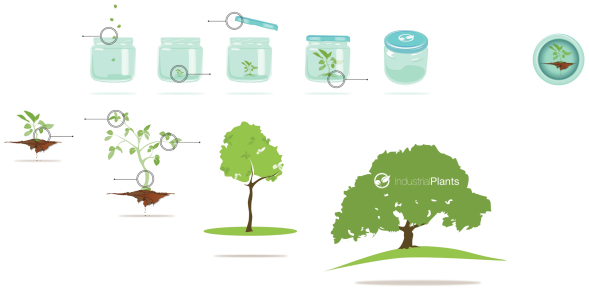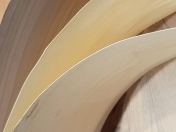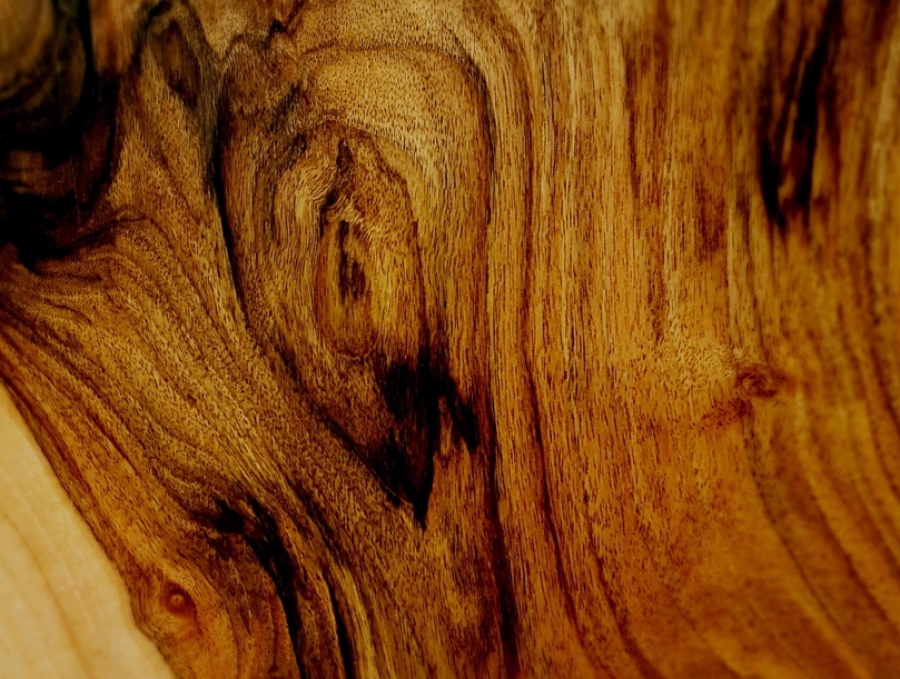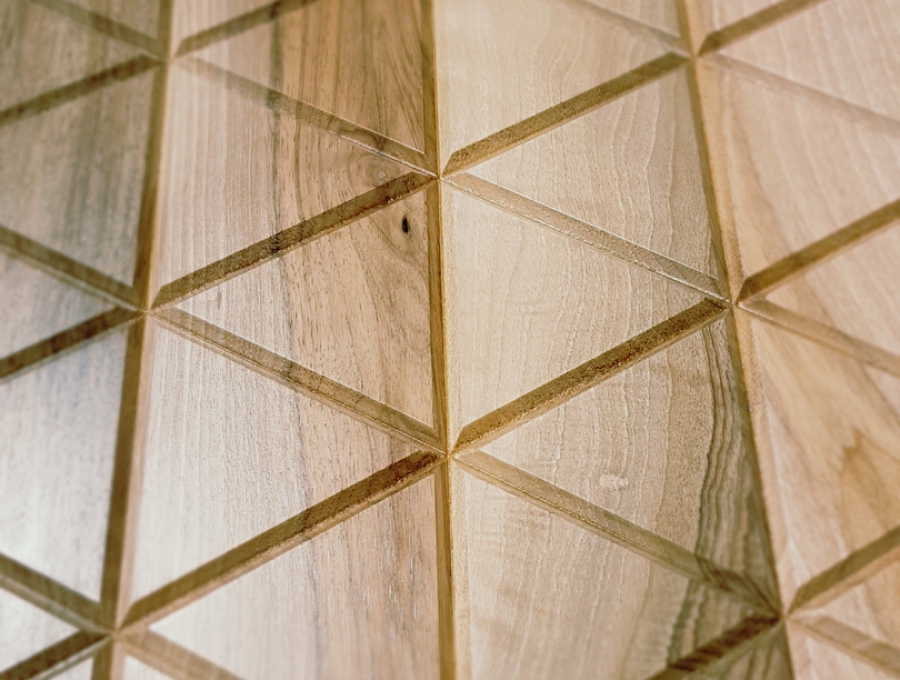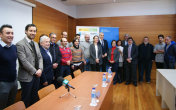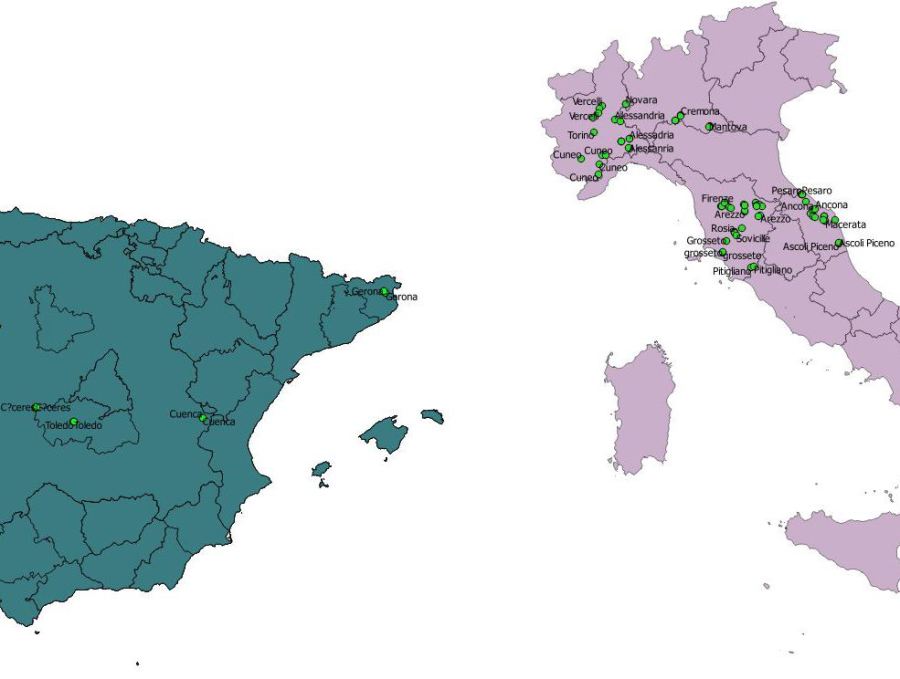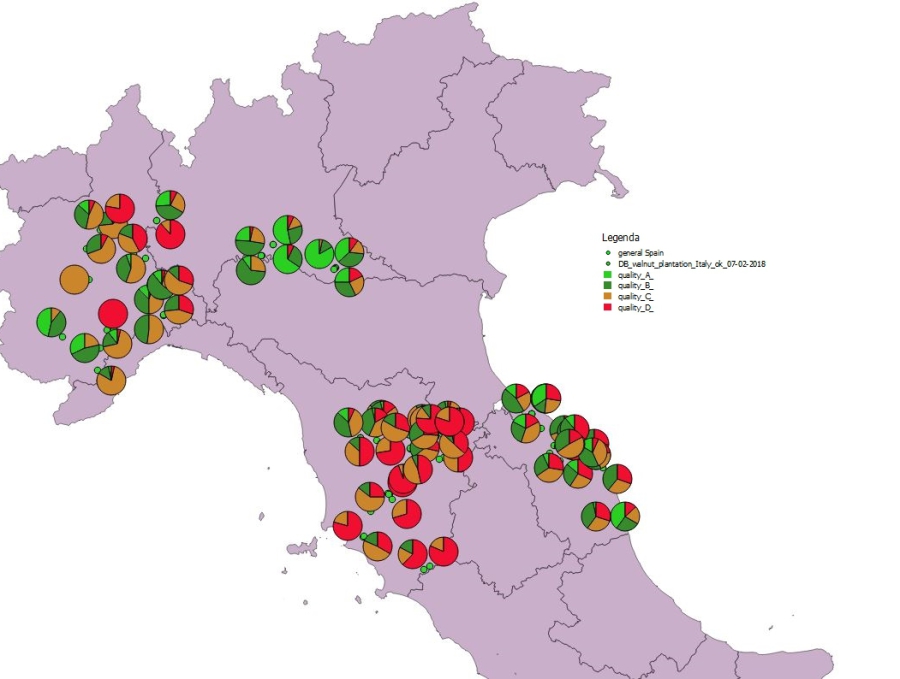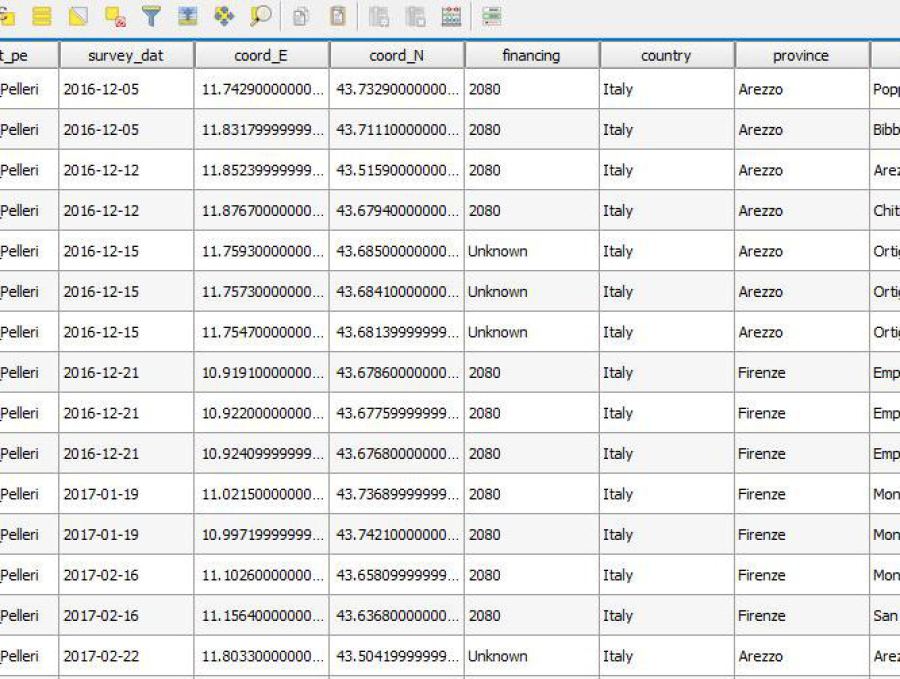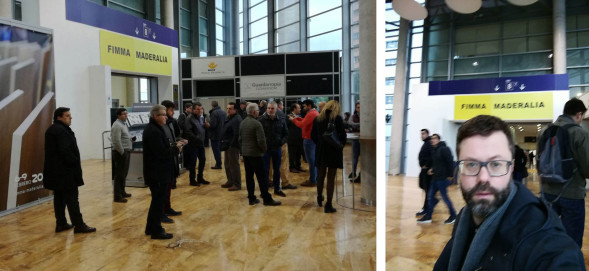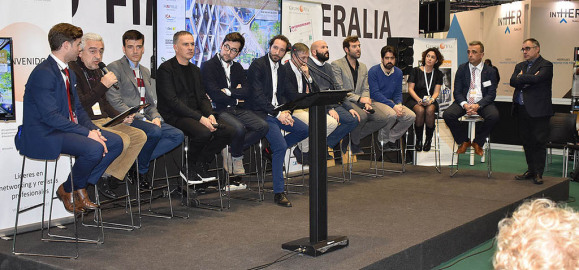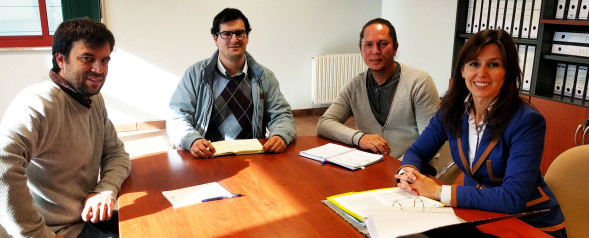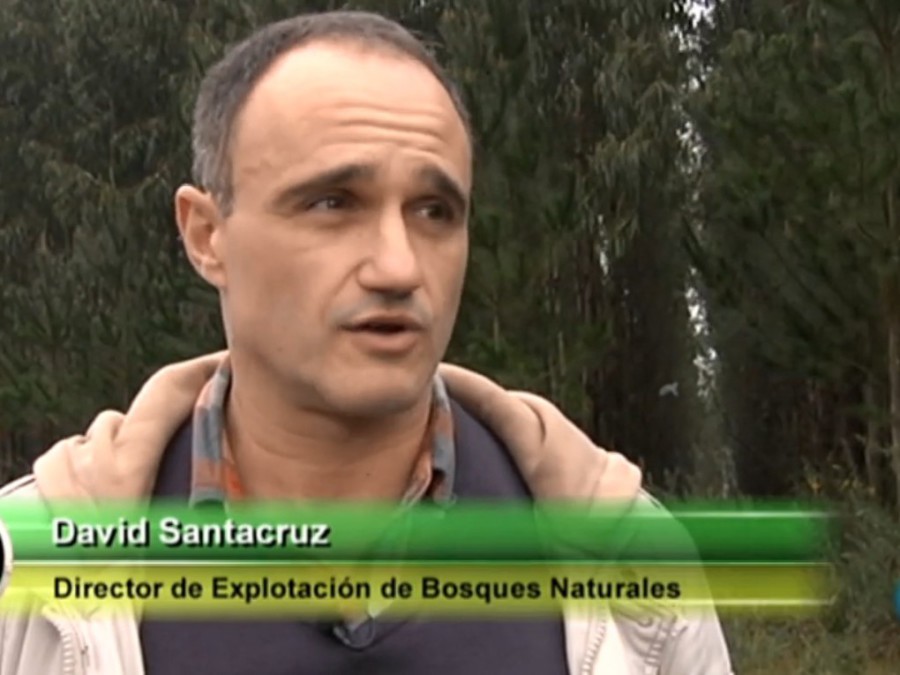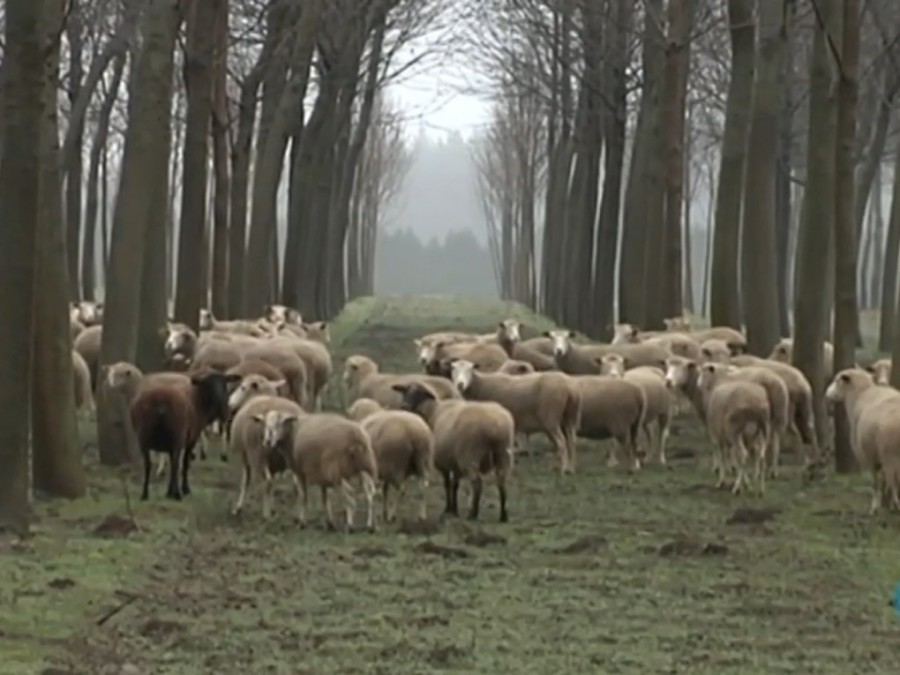ECM first steps in Stumps Biological Degradation by Pleurotus ostreatus in walnut plantations.
ECM Ingeniería Ambiental S.L., a Technology Based Company aimed at adding value to mycological resources, is one of the 9 participants of woodNAT project. Its role in the project consists of improving the quality of the walnut plants and their growth in the preliminary stages, improving the profitability of the plantation growing different strains of edible or medicinal fungi and making a Stumps Biological Degradation to eliminate the stump in the latest stages of the plantation. ECM implication is focused on WP2 and 5, titled Thinning scenarios and Plant production, respectively.
The first steps in the project have been done on the stump biological degradation objective in the last months. A total of 1475 trees were cut down and mycelium was expanding in the cross-sectional
discs. To carry out this, the mycelium was prepared in the lab. The best strains of edible or medicinal fungi species were selected, replicated and applied into the stump. Three arbuscular
mycorrhizal fungi species were tested. They were Pleurotus ostreatus (Jacq.) P. Kumm, one of the most well-known cultivated species in the world; Lentinula edodes (Berk.) Pegler., an emerging
cultivated species, known and appreciated in Asia for centuries and Trametes versicolor (L.) Lloyd., an species with medicinal properties backed by several scientific studies. Pleurotus ostreatus
showed the best results and was chosen for walnut wood quick degradation. In the cross section the mycelium was expanded and the biological treatment ended by covering it with land and a
biodegradable plastic bag to ensure the best conditions for the treatment.
Woodnat project aimed to develop intelligent and novel solutions and tools to support sustainable wood production. Stumps Biological Degradation treatment carried out by ECM allows the plantation to
avoid the use of a high quantity of energy and CO2 emissions or chemicals that would be needed to remove them. This is a method that can increase the sustainability of the plantations in Europe while
the harvest of mushroom species can be carried out by social community. This task permits ECM to show the results of this alternative and sustainable method and to demonstrate the possibility to
validate and replicate it worldwide. In addition, Stumps Biological Degradation let ECM apply environment-friendly solutions in the latest step of the walnut wood managed forests.
Thanks to woodNAt project, ECM will introduce fungi along the stand age, increasing the value of the wood with this eco friendly product, the mushrooms. As well as this, ECM will boost the different
abilities of fungi resources. The stump degradation by fungi species allow us to control the regrowth after cutting using biological/organic techniques and to obtain edible or medicinal mushrooms
with commercial value.
ECM believes that many solutions to solve our problems are in the nature, we just need to apply the proper technology. WoodNat project is a good opportunity to show it.
Document Adobe Acrobat [9.6 MB]
The induction of intense axillary shoot proliferation in walnut clone D15 at Industrial Plants OOD. in Kazanlak, Bulgaria
Having in view the low multiplication index in this walnut variety and the low amount of plant material per growth room area unit, we experimented further in order to obtain intense axillary shoot proliferation and to scale up the in vitro multiplication stage. We tried several things, for example intense axillary shoot proliferation by the use of several cytokinin treatments in standard culture vessels - 580 ml canning jars (Fig. 1), as well as one-litre polystyrene boxes - standard containers used for food storage and delivery (Fig. 2) and two-litre polystyrene boxes.
We encountered several problems during subculture. These consisted in the instability regarding the growth and proliferation of walnut plantlets on multiplication media that provided high proliferation rates. Subsequent culture cycles were affected by excessive callus growth, as well as deformation of axillary shoots and inhibition in the growth of axillary shoots, thus resulting many shoots with stunted growth, not suitable as explants. Especially the presence of large masses of callus proved to have inhibitory effect on growth.
The use of standard one-litre plastic food containers as culture vessels for the up-scaling of the multiplication stage provided some spectacular preliminary results, with intense shoot proliferation, as 3-7 axillary shoots were regenerated per explant (Fig. 2), but the same problems were encountered during subsequent culture cycles.
The experimental treatments regarding the use of two-litre plastic boxes gave spectacular results (Fig. 3); initially the multiplication index was 9, but they proved
to be unstable, causing physiological problems in the plantlets.
We intend to to carry on with this direction in our research, because it has great potential. Our results show that the use of several cytokinin treatments has the potential to improve axillary shoot
proliferation. The vessels that we tested are valid alternatives to standard jars or Combiness vessels. Further improvements are needed in the stability and reliability of the in vitro multiplication
stage.
Veneer handling system
According to the figures developed by LOSAN ROMANIA, up to 14 people is fully needed along a productive line of wood veneer. Among other actions, handling is one of the processes needed for veneer production. However, handling is not a productive action. Note that handling is not about producing, so it does not add value to the productive process. Considering this, handling is an action that should be as automatic as possible in order to minimize the consumption of resources in not productive activities.
The first approximations to veneer handling based considering the specific needs for thin veneer handling. This is a material between 0,5 and 2 mm width. Nevertheless, the quantitative and
qualitative analysis of European Walnut veneer carried out by WOODNAT members showed a bigger interest on thick veneer. This is a veneer between 2 and 7 mm width. Thick veneer is a more stable
material. Moreover, it can be produced with logs of a smaller diameter, which is one of the Partnership challenges.
ASIMOV proposed an initial solution for a thick veneer handling system. The solution based on gripping by means of vacuum. As veneer is a very flexible material, this kind of griping could not be the
best one. Moreover, the variable widths of the veneer made difficult to ensure a good performance of vacuum grips. Therefore, ASIMOV decided to investigate a solution based on movable trays.
The final solution bases on this schema: the veneer fails into a tray and the tray moves forward to provide more surface for the next veneer. As bundles are the basic unit for veneer packaging, the
length of the tray is decided to allow forming bundles of veneers. The system based on trays also allows to classify the output. In order to do it, a certain amount of trays are placed one under the
other. Being in different levels, the veneer can be classified to any tray considering its width and/or surface quality. The prototype of this design was designed with four different levels. No more
trays were possible due to limitations on the available space at the industrial facility.
Quantitative data on veneer production
The feasibility of European walnut veneer is one of the challenges of WOODNAT Project. In order to success on this challenge, LOSAN ROMANIA has made a large research between October 2016 and February 2018. The research involved technical issues as well as market considerations. The Company presented the first conclusions of that research during the last Consortium meeting, held in Madrid on February 2018. Here we present some of the most of the facts observed and measured during the first Period of the Project.
The minimal diameter of the walnut logs to support a profitable transformation into veneer was the first matter of interest studied along the first period of WOODNAT Project. After a large campaign
of measuring developed within Work Package 3, the Company identified two main issues. The conclusion base on a large amount of information collected. The information refers to the characteristics of
the incoming logs and value of output veneer.
From one hand, the impact of diameter on production costs has been studied. This means that, the smaller the diameter is the higher production cost are supported. Another question studied is how the
diameter of the log conditions the quality of the veneer produced. According to the studio developed by LOSAN ROMANIA, the smaller the diameter is, the highest amount of C-grade veneer is produced
and lower amount of A-grade. Because of this, the mix of values decreases when using small diameter logs. So cost increases and production value decreases when small logs are used to feed the veneer
production.
Nevertheless, two opportunities have been identified by LOSAN ROMANIA along the research carried out since the WOODNAT Project start in October 2016. One of the observations refers to sapwood
presence on walnut veneer considering log diameter. According to the study, the smaller the diameter is the higher percentage of sapwood is present at the veneer. This fact defines a first field of
interest: European walnut as a material to support dyeing processes. Logs under 35cms diameter represent an opportunity for that kind of aesthetic modification. Therefore, the Company will develop
further work on walnut sapwood veneer dyeing within the next months.
Another opportunity identified by LOSAN ROMANIA refers to sapwood colour modification using hot water. That technology allows to darken the natural appeal of the sapwood veneer. Note that the natural
material looks very different to traditional walnut surfaces made using heartwood of Juglans Nigra. The experiments showed good results transforming Juglans Regia sapwood into a darker veneer that
looks more attractive to the market. Dyeing and vaporising will be further developed during the next months within Work Package 4 of WOODNAT Project.
Physico-mechanical tests on walnut lamellas
In January 2018 the staff of CREA, in Casale Monferrato (Italy), has carried out orientative physical tests on various types of walnut lamellas; the lamellas derived from “common specie” (Juglans regia) and from an “hybrid” (J. major × J. regia). They were divided into:
- termotreated lamellas of hybrid specie (T)
- steam treated lamellas of hybrid specie (V)
- naturally dried lamellas of hybrid specie (S)
- naturally dried lamellas of common specie (N)
The different treatments are different methods of drying and wood processing; the thermotreatment provides high temperatures and pressure: it causes darkening of the wood color and increases its durability (resistance to biotic and atmospheric agents).
The staff obtained 5 test pieces for each lamellas (for a total of 200 pieces), all with dimensions of 50 x 50 mm (and 4 mm of thickness) as requested by the Standard for physical tests adopted.
The staff has carried out measurements to know
- the density (g cm-3)
- the hardness (N mm-2)
This latter was measured according to the
UNI EN 1534 Standard (Brinell hardness test), using a tensometer to apply the requested load (1 kN for 25 seconds) and an optical microscope to measure the orthogonal diameters of
imprints.
No data were available about age and growth site conditions of the lamellas; furthermore, the sawing direction (tangential or radial) was not easily recognizable and the tables contained parts of sapwood and heartwood. In such conditions it is not possible to assign with certainty the data variability to drying treatment or to specie, because many other uncontrolled factors may have influenced the results. However, potentially interesting results have been found.
The wood density
It seems possible to recognize two groups: «common walnut» (red box) vs «hybrids» (green; light blue and lilac). The density of common walnut is, in average, lower,
than that of the others.
Among hybrids, the density of the thermotreated one (light blue) is in average lower (probably due to treatments, even if other unknown factors may have influenced the data). The average density
observed was of 0.744 g cm-3 (in normal conditions of 20 °C and 65 % of air humidity)
The wood hardness
It’s possible to recognize two groups: «natural drying» (red and green) vs «artificial drying» (light blue and lilac). The treatment may has influenced the hardness of the wood, but there can be other unknown factors. The average value of Brinell was of 3.6, a little higher than others results reported in literature for walnut.
Box about hardness test that will pop-up clicking on the words “Brinell hardness test” at page 1:
The Brinell hardness test
The Brinell hardness test is a methodology standardized by UNI EN 1534 to evaluate the hardness degree of wood. This Standard provides a protocol for samples
preparation, for tensometer and load cell regulations and for imprints measurements.
The test pieces have to be 50 mm x 50 mm; a load of 1 kN must be applied for 25 seconds on the test piece, using a steel sphere with a diameter of 10 mm. The impression obtained will have a variable
diameter based on the hardness of the wood (a smaller diameter will be obtained on a harder wood); the diameter of the impression will be measured in parallel and perpendicular directions (with
respect to the fibers). Finally, the Standard provides an equation that allows to obtain the related Brinell value.
The hardness of the wood depends on genetic factors but there are many external factors that cause important variations, for example plant age, growth site, measurement direction, presence of sapwood
or heartwood.
WALE and WOODNAT
Dissemination
From the very beginning communication has been at the center of this multi-stakeholder project.
First priority has been to give to Woodnat an identity thanks to :
- a logo
- a set of templates shared among the nine project partners
- a website www.woodnat.eu broadcasting the context and advancement of this project to the world ( thousands of connection coming from 60 different countries), and informing about the EU support.
- E-news : nearly 30 publications focusing on the diverse areas of search within the scope of woodnat project.
- a brochure presenting the project and shared during the meetings and fairs.
- social media :
- As ResearchGate constitutes one of the most important social network for scientists (gathering more than 14 million users), a ResearchGate account was created in July 2017 as a part of Woodnat communication strategy. Publishing through this channel contributes to increase the visibility of the project and its main results with the searchers. In addition to this, we are expecting feedback from the scientific community and receive important opinions, suggestions and potential collaboration. All this would bring some additional an external inputs to enrich the performance of all participants. Also, the ResearchGate profile does provide equal privileges to all project partners which will allow any partner to publish freely through the Woodnat account, contributing to the project communication activity and the dissemination of its outputs.
- LinkedIn is also used by the different partners to disseminate Woodnat publication among the professional network.
Wale's contribution is also about the development of Woodnat's business plan
- To understand market needs and to share results with researchers and industrial companies
- To think about alternative uses of small dimension trees coming from plantations
- To stimulate partners on exploitation of results
– Meetings
– Visit of trade fairs
Market niches identification is part of this action
- The main objective is to understand what are the trends on the European market (especially applied to small sized wood pieces);
- Visiting companies involved in timber trade business and evaluating business opportunities versus technological constraints to process small sized wood pieces;
- Participating to timber show (Domotex, Interzum, Batimat, MOM) to stay visible and attract interest;
- Sharing with Woodnat participants reports and pictures through participation in different meetings (Mantova, Santiago, Madrid), to maintain a regular communication flow within the project group;
- Linking Woodnat to LCB or SEB organizations, to establish at its earliest stage, relationshipswith already existing networks and prepare further growth.
What will be the next steps ?
- Event: End of May 2018, Carrefour du Bois, Nantes
- Woodnat website : new updates
- A new brochure
- Poster
- Organization of SEB visit in 2019
- New proposals concerning market
- and Brussels meeting in June 2018 !
WOODNAT coordinator at CO-WORKING FORESTAL in Ourense (Spain)
CO-WORKING FORESTAL is a program boosting entrepreneurship in Galicia. It is focused on business ideas taking advantage of the natural resources of the region. As Galicia produces over the 50% of the solid wood of Spain, wood industry is one of the most important fields of the coaching program.
The program is part of GO2WORK project. The initiative on forestry is placed in Ourense and is steered by CIS-MADEIRA and
EOI. CIS-MADEIRA is the leading research body in the region. On the other hand, EOI is the school for industrial organization.
Within the Co-working, both organization provide coaching to entrepreneurs by means of discussing examples and analysing potential projects. According to the official figures, there are 20 projects
of 27 entrepreneurs at the program.
WOODNAT coordinator took part at CO-WORKING FORESTAL in 2018. The head of R&D at SEISTAG shared its experience on how to transform innovation
into business. Moreover, the speech focused on difficulties and opportunities of regional forestry. The meeting took place on Thursday afternoon lasting more than two hours. During the meeting, the
audience showed interest on the idea of a second generation of forest and paid attention to WOODNAT challenges and objectives.
GIS WALTUN PLANTATION DATABASE IN PLACE
By CREA FL
Moving towards WOODNat midterm the GIS Database of First Generation Planted Forest (FGPF) has been completed.
The database is one of the deliverable of the WP 1_ Learned lessons old plantations, collecting data from Italian and Spanish Walnut plantations. It contains lots of information about site condition,
plantation design, management, pest and disease, wood production and quality. The main goal of this Database is to collect information to evaluate causes of success or failure of the existing
plantations, in order to improve Walnut cultivation both in Italy and Spain.
Data are classified in four main section:
- Site description
- Plantation description
- Cultural techniques
- Average data from 30 trees tested areas
These data are going to be analyzed and compared with the best results obtained in some experimental plots realized in both countries. On the basis of these results, evaluation scenarios of wood production and wood availability in FGPF will be provided.
An amount of 96 Walnut plantations have been sampled (17 from Spain and 79 from Italy). In Spain all the plantations are pure ones with a high density design while the
Italian case is more diversified in terms of mixture and field design. The medium surface is larger in Spain than in Italy (11 vs 2.65 m2 ) as they are realized and managed by big companies while in
Italy there are mainly small plantations realized on previous agricultural land, under public financing support. Public financing itself is one of the reasons of critical situations in this case, as
most of the plantations have been realized to benefit of contributions more than as an owner’ interest, in some cases also in not suitable area for the planted species. On average Spanish
plantation are younger than Italian ones (14 vs 20 years).
What looks really interesting is the differences in growing and quality performances per field design: polycyclic and mixed plantations show a higher proportions of better quality classes of the
stems than pure ones (A+B% 67.3 polycyclic, 30.5 mixed, 27.6 pure), pure plantation in Spain instead have a better performances in term of stem quality than the Italian ones (A+B % 78.2), likely due
to the high and careful management often missing in Italy (above all in pure plantations).
Further analysis have been necessary to assess the effective wood volume achievable and the proportion between high value logs final volume and small diameters resulting from thinning (one of the aim
of WOODNat is valorize small diameters instead of considering them no more than firewood, reducing also management costs).
Another aspect to deepen in future on the basis of what we observed in the plantations is about pest and disease: at the moment we only made an evaluation of damages (type and intensity) but it
should be interesting also assessing the correlation among damage/disease, causes and current management.
Woodnat 4th General Assembly - Madrid - 19th February 2018
On February the 19th took place the fourth WOODNAT General Assembly. The meeting happen within the 17th month of the Project execution. This means just two weeks before the end of the first periodic report. All the partners were present at the meeting which was organized by BOSQUES NATURALES and last the whole day. The Company also provided to the rest of the Partners with a quick lunch at mid-day.
The meeting took place at BOSQUES NATURALES headquarters in Madrid. By means of this, the Project Consortium had the opportunity to visit the showroom of the Company. The day after the General
Assembly, it was made a visit to the Company plantations in Toledo (Spain). This is a region in the outskirts of Madrid hinterland, not far away from the country main city.
During the morning and half of the afternoon, most of the technical work developed under WOODNAT Project was shared between the Consortium members. The meeting started at 11:00 and last up to 20:00
in the afternoon. The presentation of the activity developed under different Work Packages was steered by the leaders of every activity. Information related to genetics, forestry and wood industry
was successfully shared among the technicians of the different Companies.
The last hours of the day focused on administrative issues. The Partners agree on a schedule for the actions needed to submit the Periodic Report properly and on time. Most of the Companies had
already check the eligibility of their costs and showed updated records of all the actions taken under WOODNAT Project execution.
WOODNAT staff visited 2018 FIMMA-MADERALIA International Fair in Valencia.
FIMMA-MADERALIA is an International Fair held in Valencia yearly. It is probably the most important Fair in Spain. In 2018 the Fair took place between February the 6th and the 9th. Within that week, two International Fairs related to wood industry happen at the same time in Valencia. From one hand FIMMA, focused in machinery. From the other MADERALIA, which refers to decorative materials. Altogether, the two Fairs reached 23.4% more visitors than the year before.
In this edition, the fair had 443 exhibitors and overlap with CEVISAMA, the fair for the ceramic industry. In this context, a
technician from SEISTAG visited the fair during two days. He looked for decorative applications based on walnut and search innovative solutions to allow competitive processing of small diameter
logs.
In the field of decorative trends, the Valencia meeting showed big interest in melamine surfaces. The biggest companies of the sector took advantage of the fair to present their new collections.
According to those new catalogues, white surfaces are going down while clear, desaturated and grey wood surfaces tend to have a more relevant role. The use of Walnut surfaces entered into the
catalogue of leading brands such as ATEMPO
from FINSA. They offer walnut surfaces in the fronts and also use this material for solid wood table-tops of their kitchen solutions.
FIMMA-MADERALIA also showed the importance of the so called “contract channel”.
Another trend within the world of decorative solutions is the growing value of sustainable materials, which is demanded and appreciated by customers and professionals.
The fair also showed the good health of the companies offering machinery for wood processing. Local leaders such as BIESSE and BARTON presented huge stands of up to 900 square metres. The trend in
this field is using small sensors and cheap processors to provide some intelligence to the machinery. The fair confirmed that IoT solutions enter into the woood processing
machinery. In order to do this, most of the solutions use private technology provided by large companies such as BOSCH. Nevertheless, most of the new products focus on large scale production which is
out of scope of WOODNAT project.
New plants are coming: nursery plant harvest in Bosques Naturales
by Ricardo J. Licea-Moreno & Jesús Fernández Moya– Biotechnology Department- Bosques Naturales
New plant materials are available for establishing new walnut planted forests in 2018. Bosques Naturales is currently collecting the nursed plants resulting from the walnut micropropagation campaign 2017-2018 in Galicia.
The campaign started in February 2017, when the first in vitro-rooted plants were ready for hardening initiation (acclimation). Here below, a schedule of the different sub-stages that vitroplants have passed from the beginning of acclimation to the previous step for establishment of new planted forests is presented. Remarkable were (1) the reduction of the time needed for the pass from laboratory to field conditions as well as the outstanding development of vitroplants.
- (April/2017) From laboratory to field nursery. In vitro rooted microshoots
- (April/2017) First stage of acclimation
- (May/2017) Acclimated vitroplants
- (June/2017) Acclimated vitroplant before transplanting
- (June/2017) Transplanting to field nursery
- (August/2017) Nursery growing vitroplants
- (January/2018) Extracting vitroplants from field nursery
Meeting of coordinators of WOODNAT
Technicians from SEISTAG and BOSQUES NATURALES hold many meetings in the last months. From Thursday, 16th of November meeting in Lalin (Galicia) to Madrid on December the 12th and Santiago de Compostela (Galicia) on January the 24th. The Companies represent two different points of view over the wood economic activity: from one part the industry focused on transformation; from the other, the producers of roundwood.
The stress between forestry and industrial activity is something universal. What is a specific issue of the European landscape being that the owners of industrial facilities not having they own
forest plantations. This is an added difficulty for an efficient management of the resource. It is the so called “European model”. It means a large industrial complex build over short control of raw
resources.
The European model is the opposite of the American model. In vast private plantations in some southern American countries such as Chili and southern part of Brasil, the industrials usually control
the raw resource at large scale. Within that model, forest and wood are integrated business as both industrial facilities and plantations are properties of the same enterprises.
Meanwhile, in Europe the property of the soil and the property of the industrial facilities are separated. Just a few some countries managed to integrate forest and wood industry by means of advance
organization and well focused politics. Finland is a good example of those efforts on forest management. But walnut doesn’t grow in Finland. In Europe the regions where walnut grows didn’t success to
implement those politics. Therefore, the integration of property and industry is still a challenge and WOODNAT is aware of it.
Press release TV visit to the farm in Galicia
by J. Fernández-Moya - Departamento Forestal - Bosques Naturales
On January 20th 2018, an interview with the head of the management department of Bosques Naturales (David Santacruz) was emitted in the TV2 channel (Spanish national public TV). The interview was
included in the TV show AGROSFERA (weekly TV show focused on rural development and agrarian activities), showing the visit to the Bosques Naturales farm in Galicia (NW Spain) of several researchers,
farmers and foresters associated to the II meeting of the Galician Agroforestry Innovation Network, organized by the University of Santiago de Compostela (USC) within the framework of the AFINET
European project.
The participants to the meeting shared several innovative and traditional agro-silvo-pastoral technics, highlighting the benefits of incorporation livestock grazing within forest systems to diminish
the forest fires risks. Hence, the company Bosques Naturales showed an example of how the forest plantation was adapted trough the implementation of these agro-silvo-pastoral techniques: grazing with
sheep and maize intercropping.
The complete TV show can be seen in the online TV platform from the show http://www.rtve.es/alacarta/videos/agrosfera/agrosfera-20-01-18/4430707/
MAISON&OBJET: The trade show as experience. A unique experience to discover the Unexpected
by Emmanuel Groutel - WALE
Essential
MAISON&OBJET is the major event for professionals working in the art of living in all its rich and varied expressions. The lifestyle show brings together a 360°product offering. Decoration,
design, furniture, accessories, textiles, fragrances, the world of children, tableware… The styles coexist in a multifaceted way, throughout the inventive show design which enlivens the spaces. This
extraordinary diversity is in line with the varied expectations of global markets. With each session, the great lifestyle platform, at the intersection of business and creativity, reveals solutions
to visitors from around the world in search of uniqueness.
International
MAISON&OBJET is the multicultural crossroads of contemporary living. Places for meetings and exchanges, MOM welcomes exhibitors and visitors from around the world and showcase a
high-quality international offer. They provide a comprehensive overview of the excellence and innovation that help to share the best of creativity.
MAISON&OBJET decodes emerging signs of creativity.
WOODNAT PROJECT IS NOW ON RESEARCHGATE !
BY Ricardo J. Licea Moreno
Director de Biotecnologia - Bosques Naturales
As a part of the communication actions of Woodnat, was created in July 2017 a profile in ResearchGate. Being ResearchGate among the most important social network for scientists (gathering more than 14 million of users), this profile will contribute to increase the
visibility of the project and its main results. Besides sharing the Woodnat project and increase its visibility, we could receive important opinions and feedbacks, which would help to enrich the
performance of all participants. The participation of all partners with the same privileges, would facilitate the direct publication of individual updates, contributing to keep active the project and
the dissemination of its outputs.

